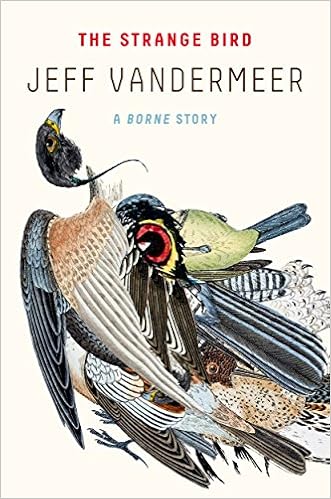
stJeff VanderMeer’s new novella, The Strange Bird, is ingenious, provocative, and deeply moving. At times, it’s almost too painful and too beautiful. Out of the futuristic world of his latest novel, Borne, VanderMeer conjures a totem for the Anthropocene. A hybrid spirit strange and familiar enough to wake us from our dogmatic stupor, Strange Bird guides us into unexplored regions of literature and the psyche. While we have excluded the secret life of animals from consciousness, on some level we understand their suffering because we suffer together. Nested in Borne, adjacent to VanderMeer’s Southern Reach Trilogy, The Strange Bird brings us to the intersection of animals and the Anthropocene. We’ve been here all along, but now, slowly, we’re becoming aware.
The Strange Bird is as much urban odyssey as fantasy. At the beginning of the narrative Strange Bird, a biotech marvel, escapes the confines of a lab. In flight, she navigates an unfamiliar and frightening world, and begins to understand herself in new contexts and from different perspectives. Before long she is captured by a solitary old man who admires her, but who also imprisons her. He is attached and attentive, seems to want to commune with her, but he can’t appreciate her suffering. Like other humans in the novella, he rationalizes his cruelty even as he is haunted by it.
Eventually Strange Bird lands squarely into the narrative of Borne, where she is captured by The Magician, a sadistic genius who transforms her into a cloaking device. Somehow she survives the radical transformation and enters a kind of bardo, where she communes with other animals, alive and dead.
The Strange Bird traces the terrible beauty of animal trauma in the Anthropocene, not as a surrogate for human trauma, but as a creaturely condition that directs our attention to the ubiquitous effects of climate change. If trauma can be communicated through non-verbal behavior, it may be an appeal to all animals. Artists like VanderMeer seem to hear that call, but are they uniquely aware of animal suffering, or uniquely responsive? I imagine that many of us are more aware of our collective suffering than we know. VanderMeer may not speak for non-human animals, but he surely gives voice to the unconscious.
No comments:
Post a Comment